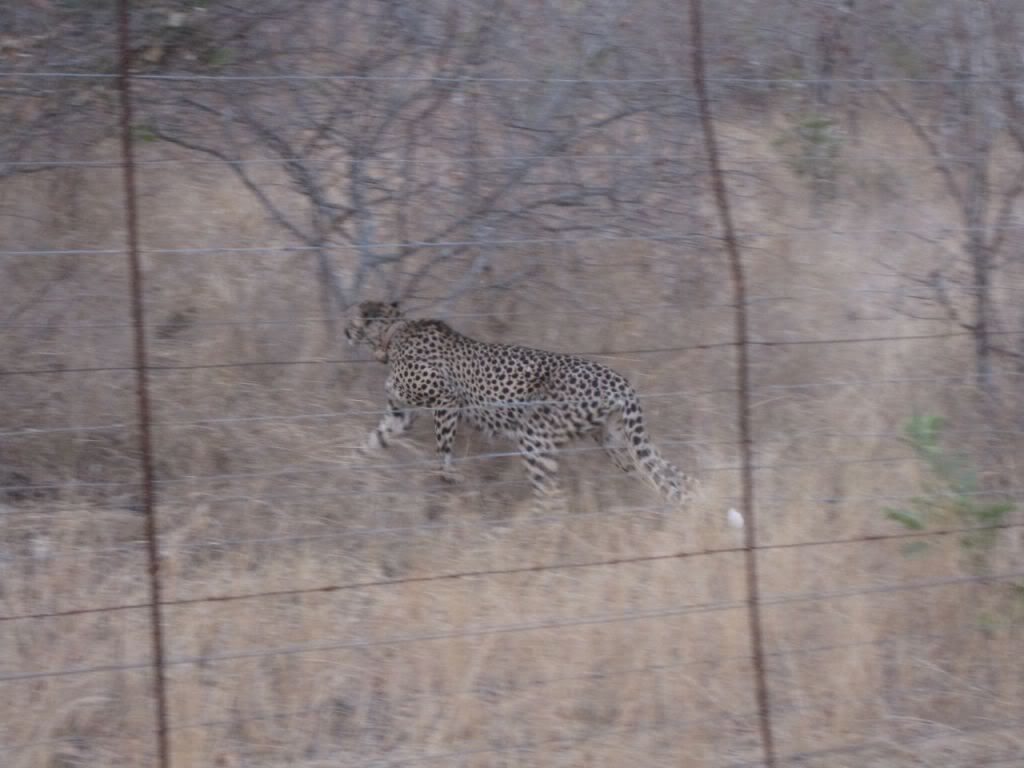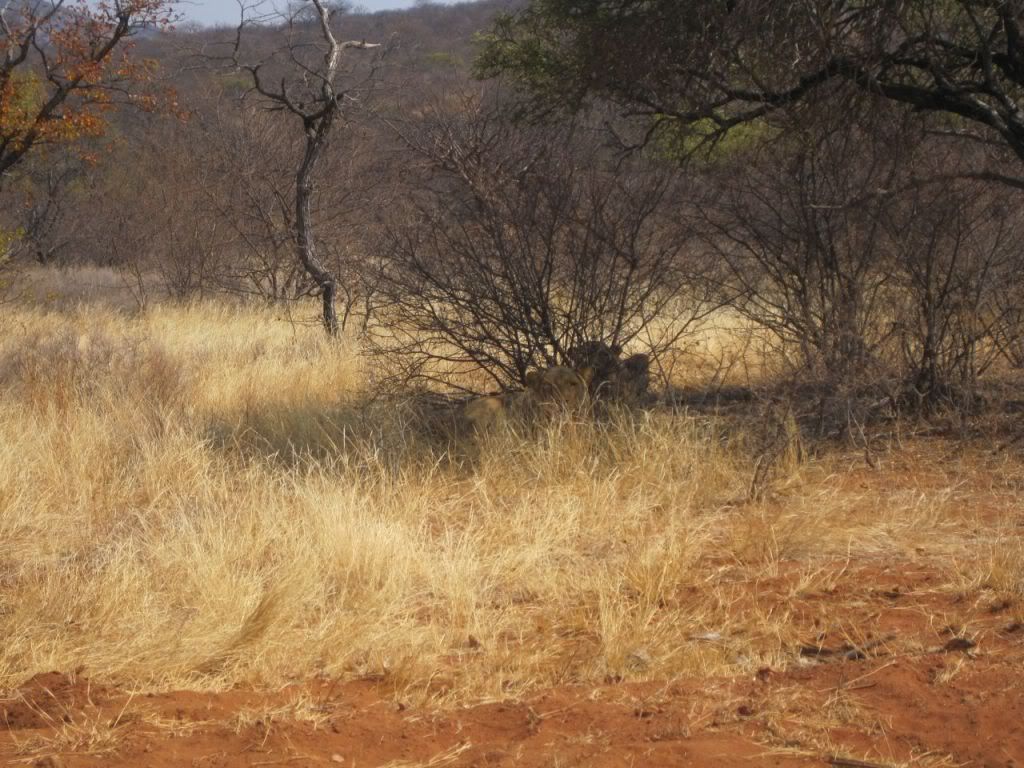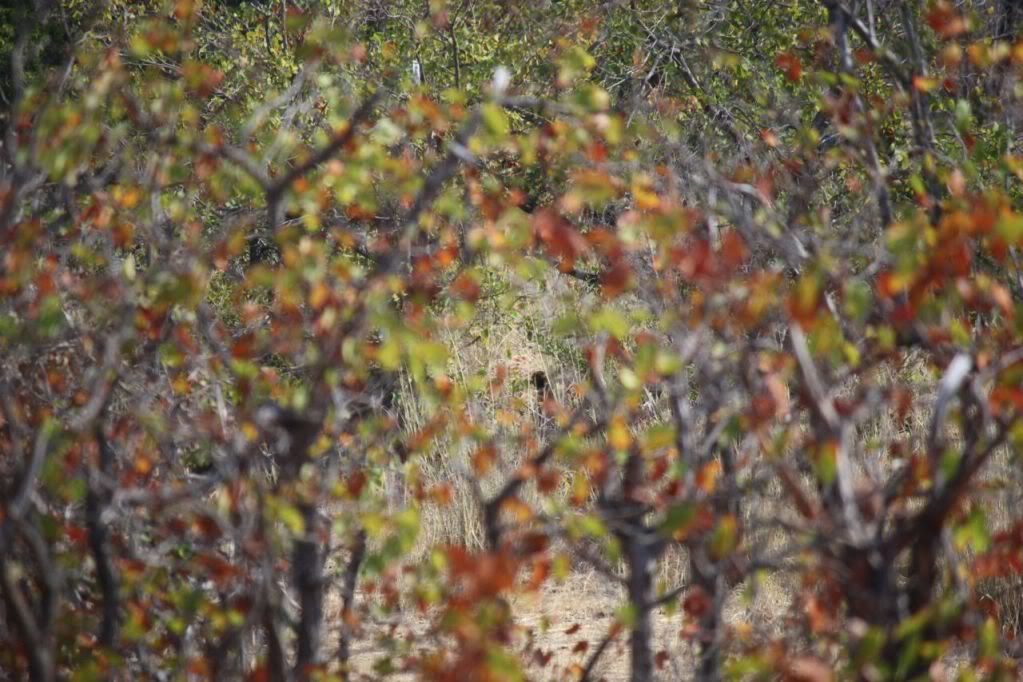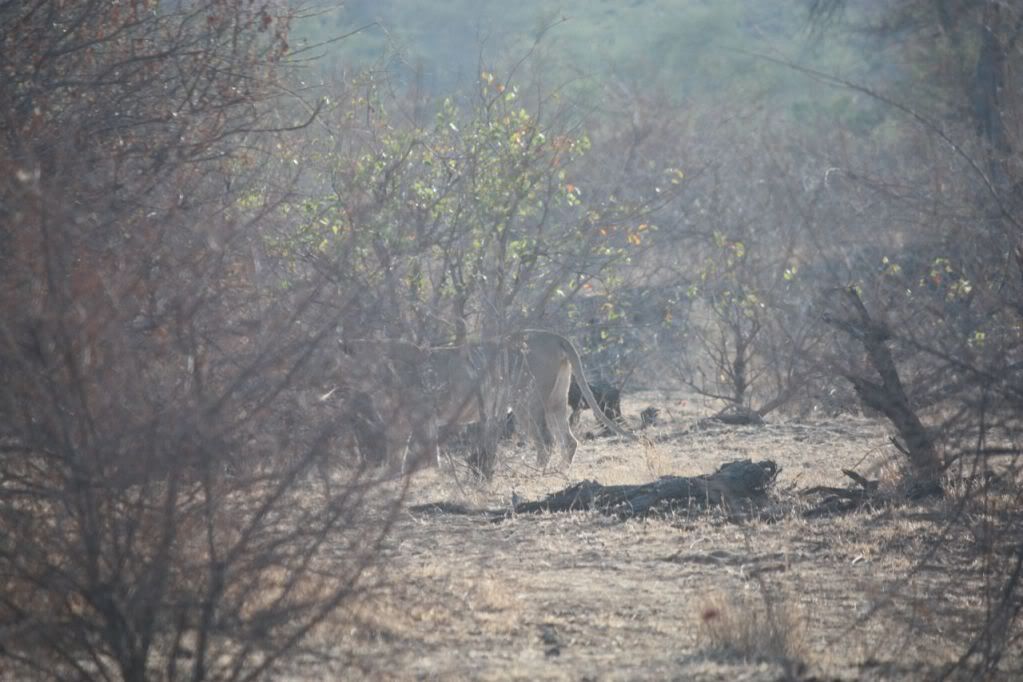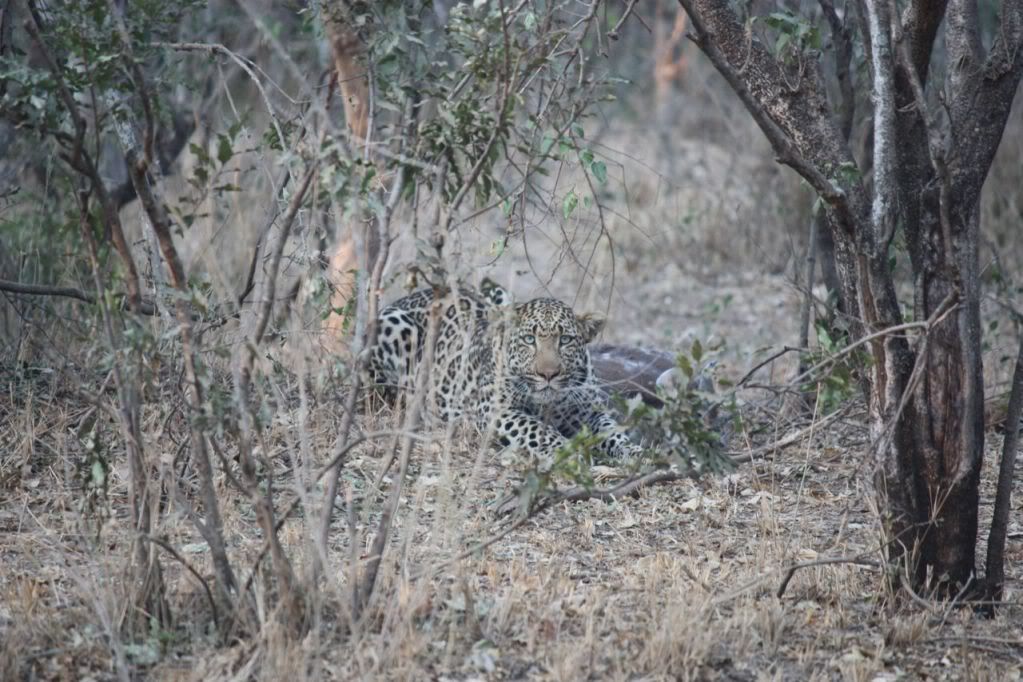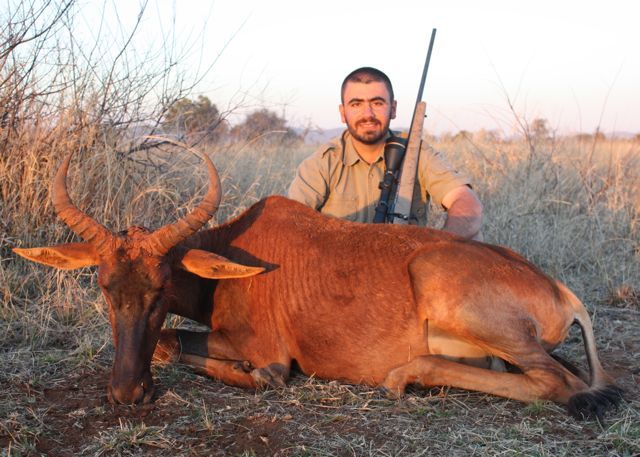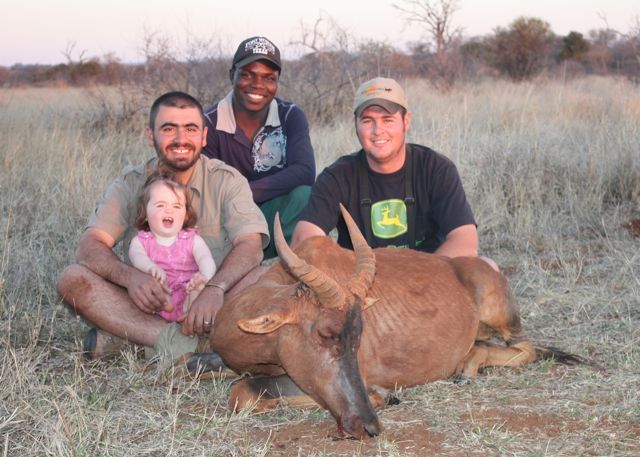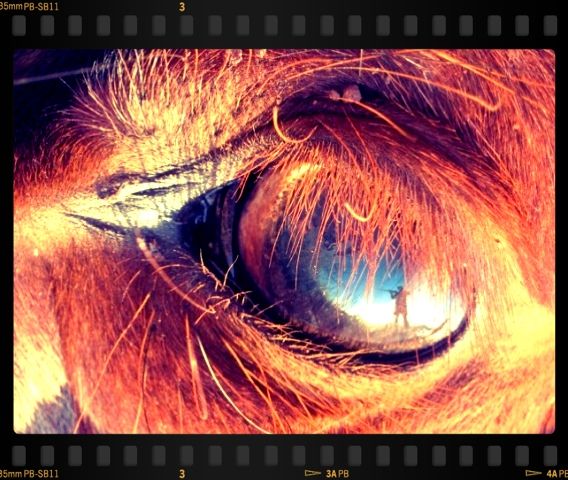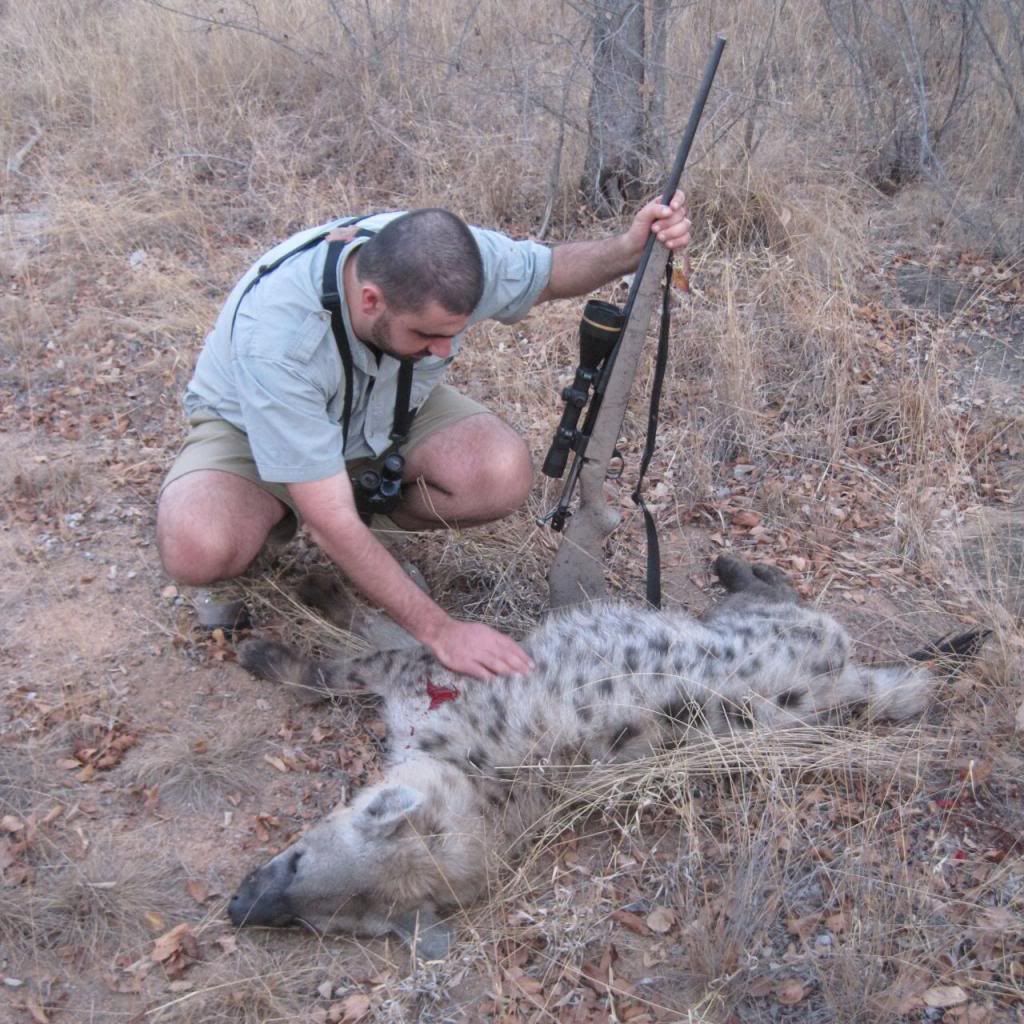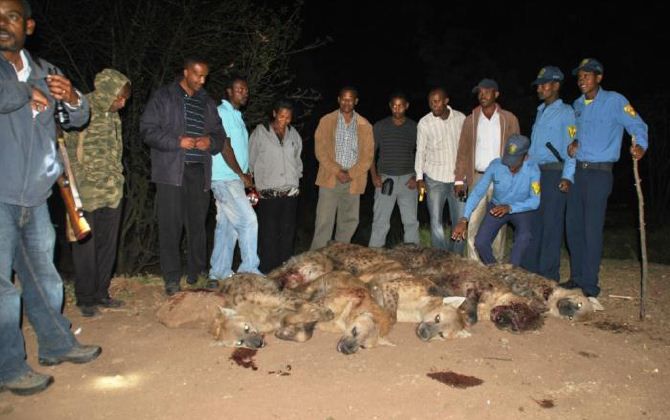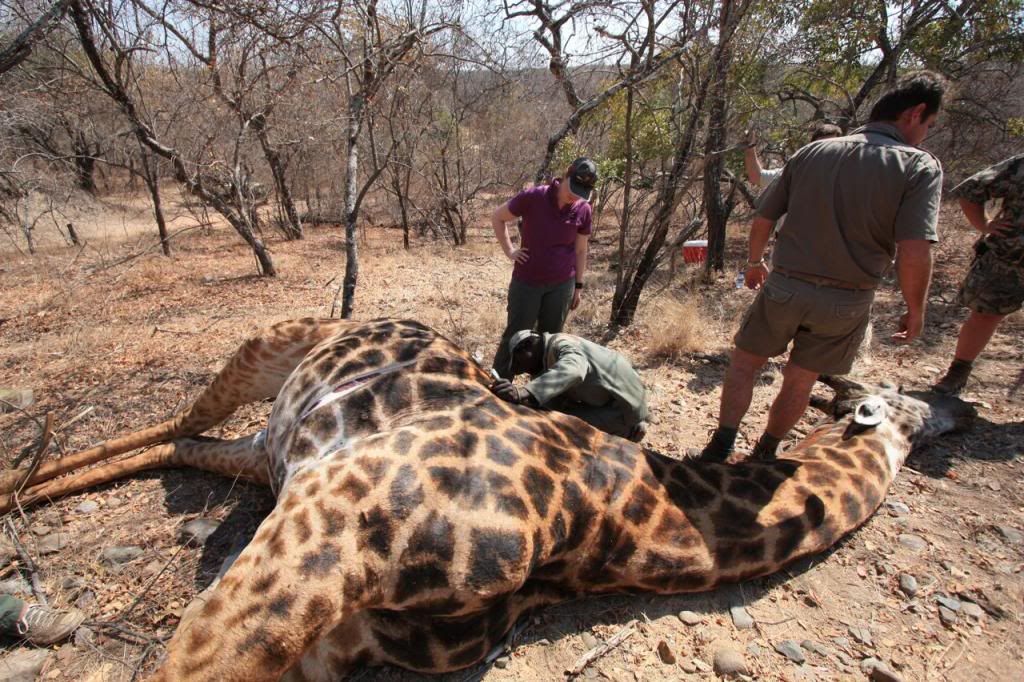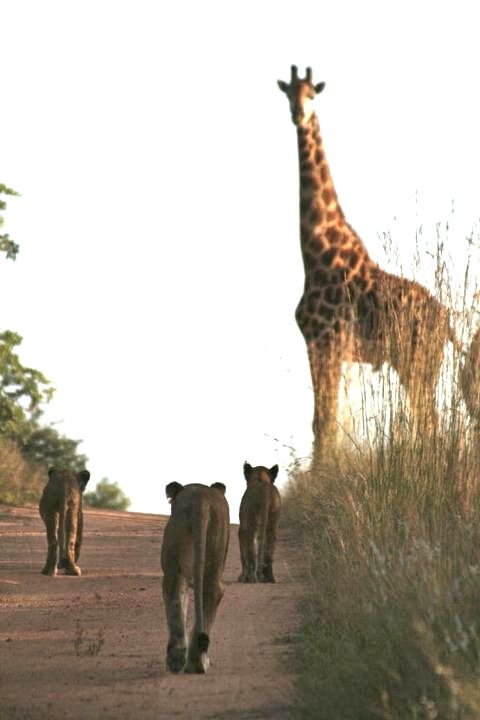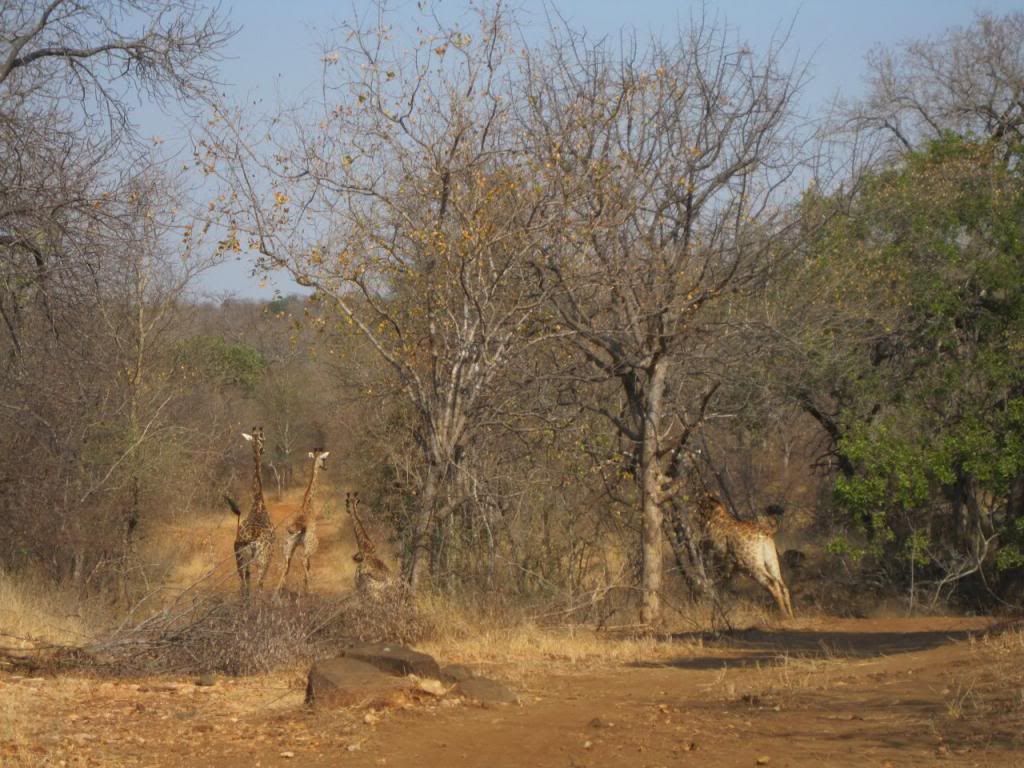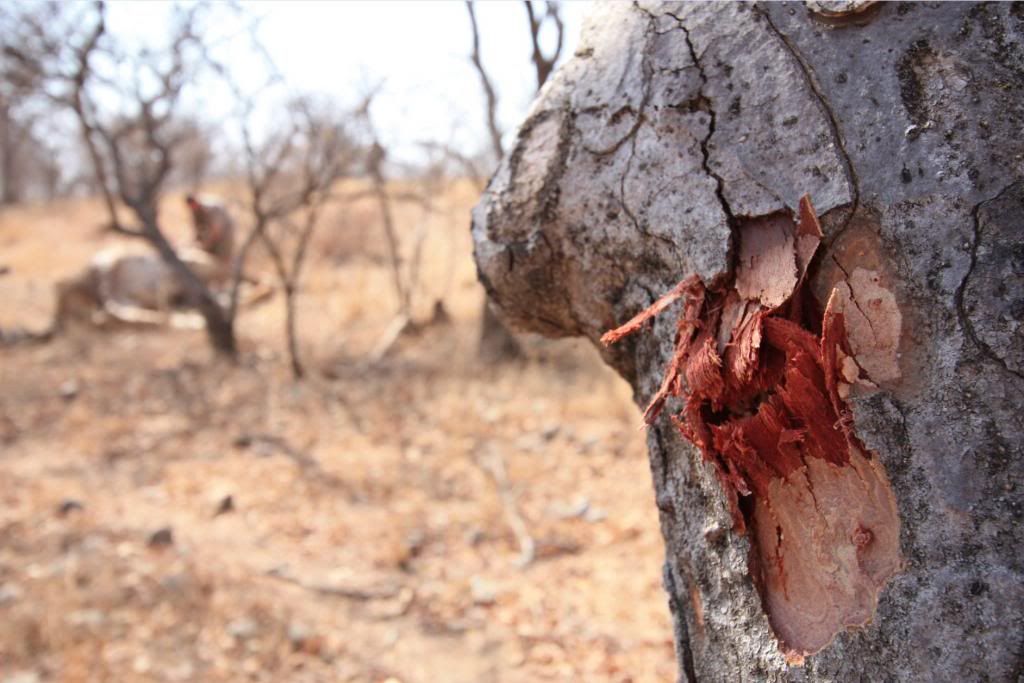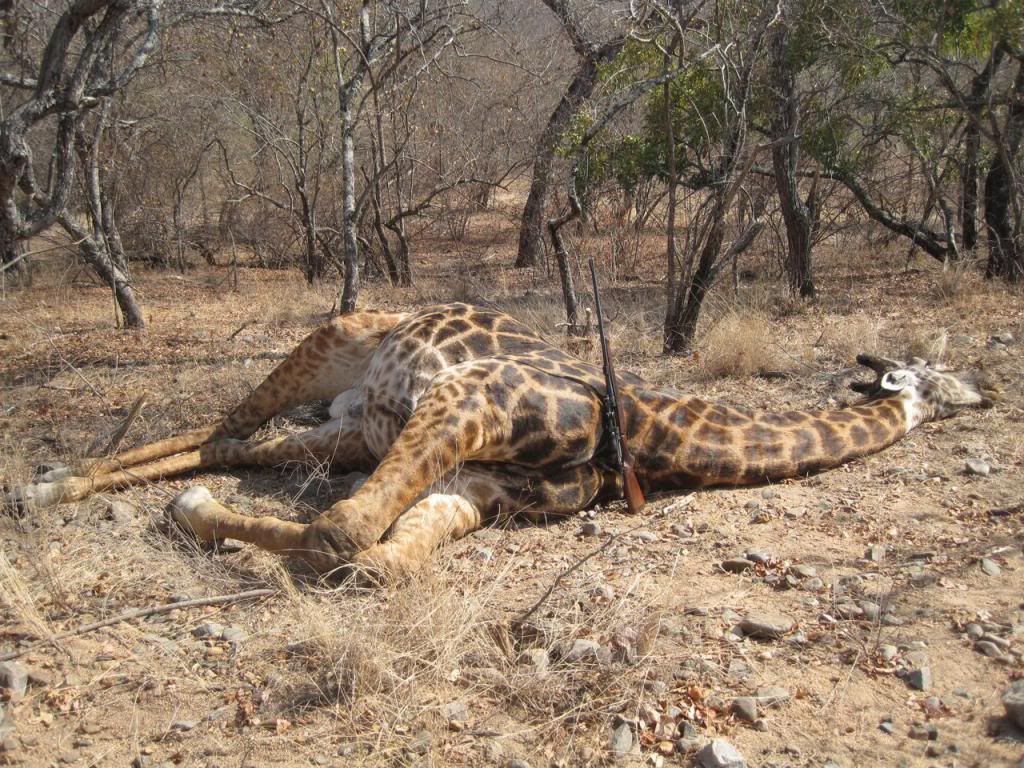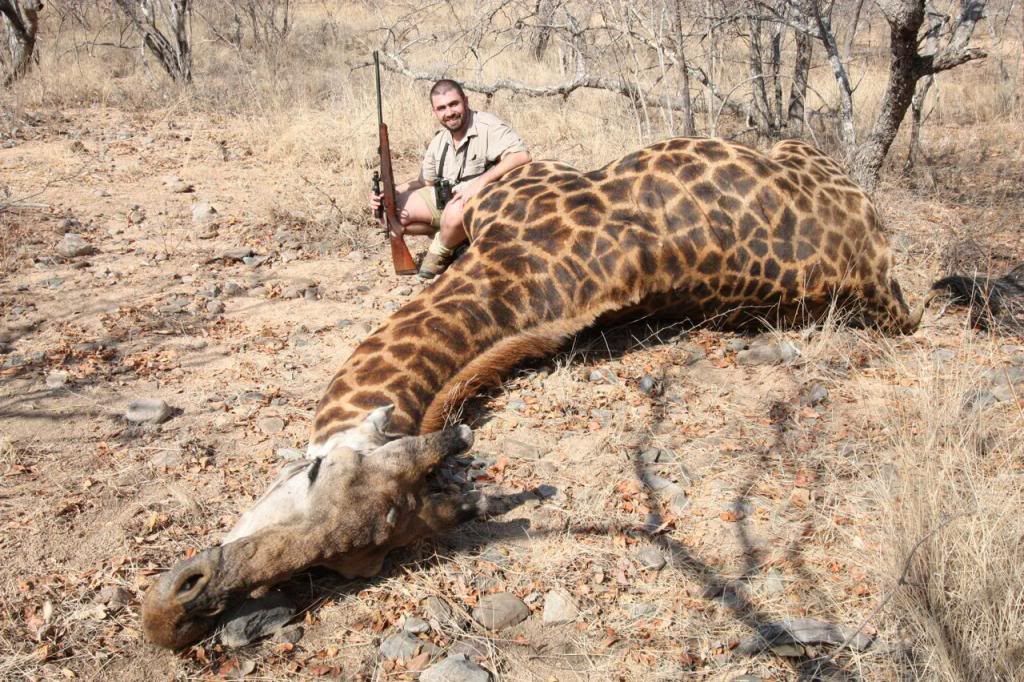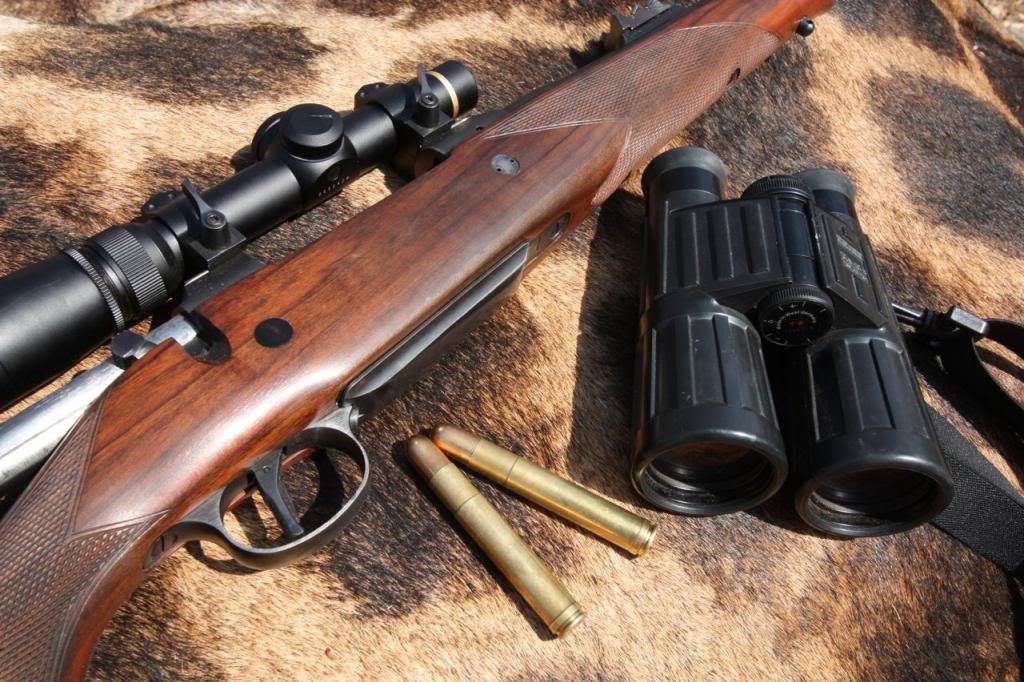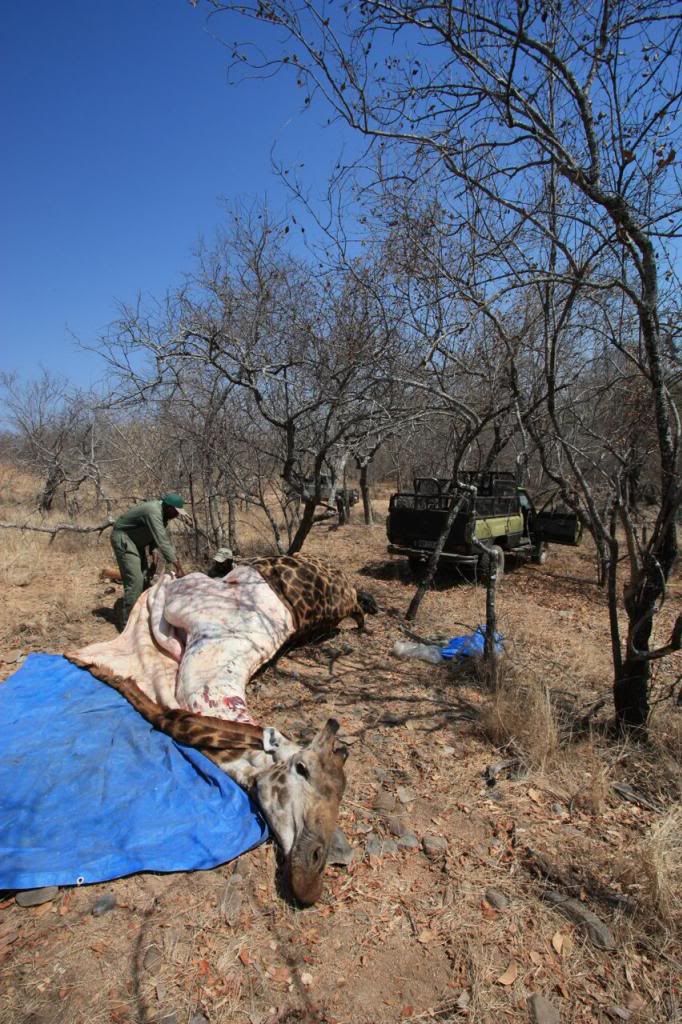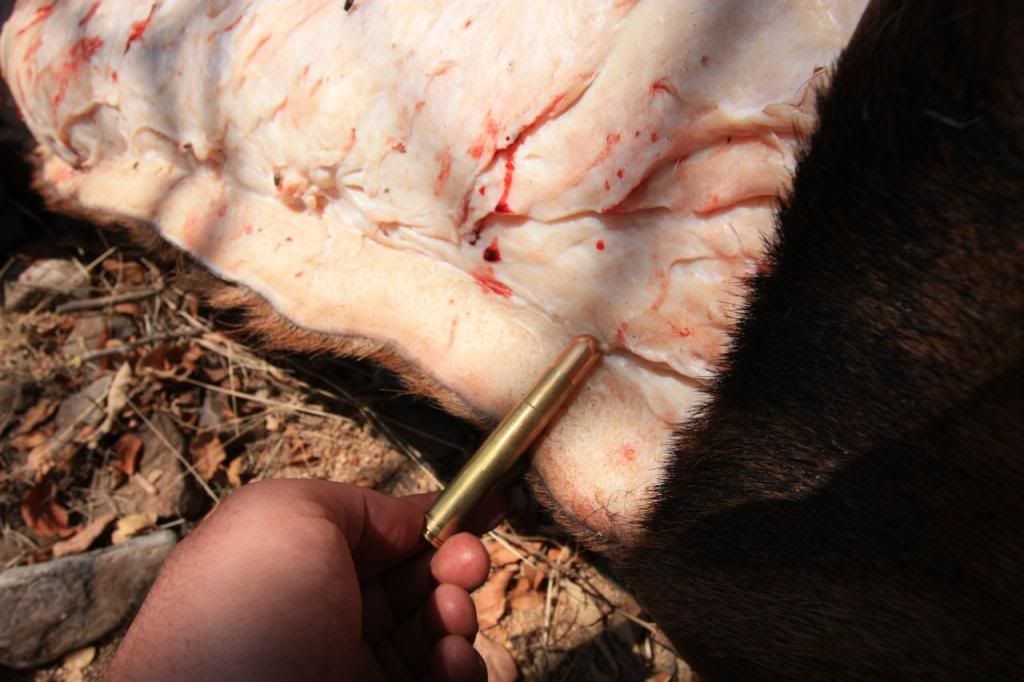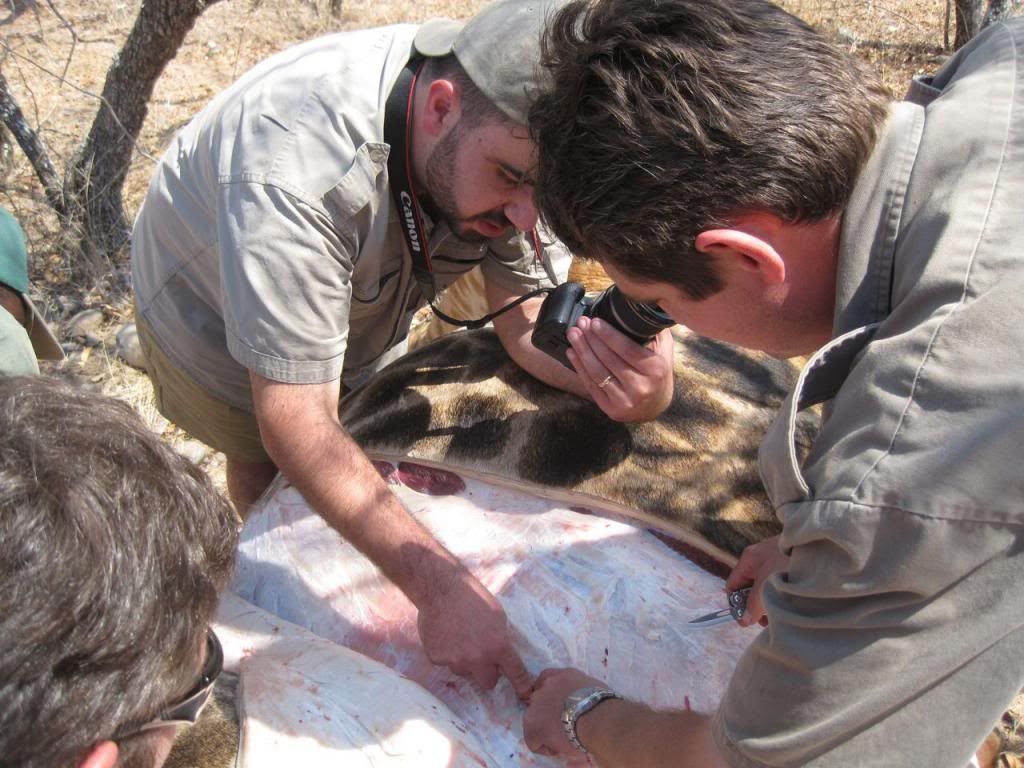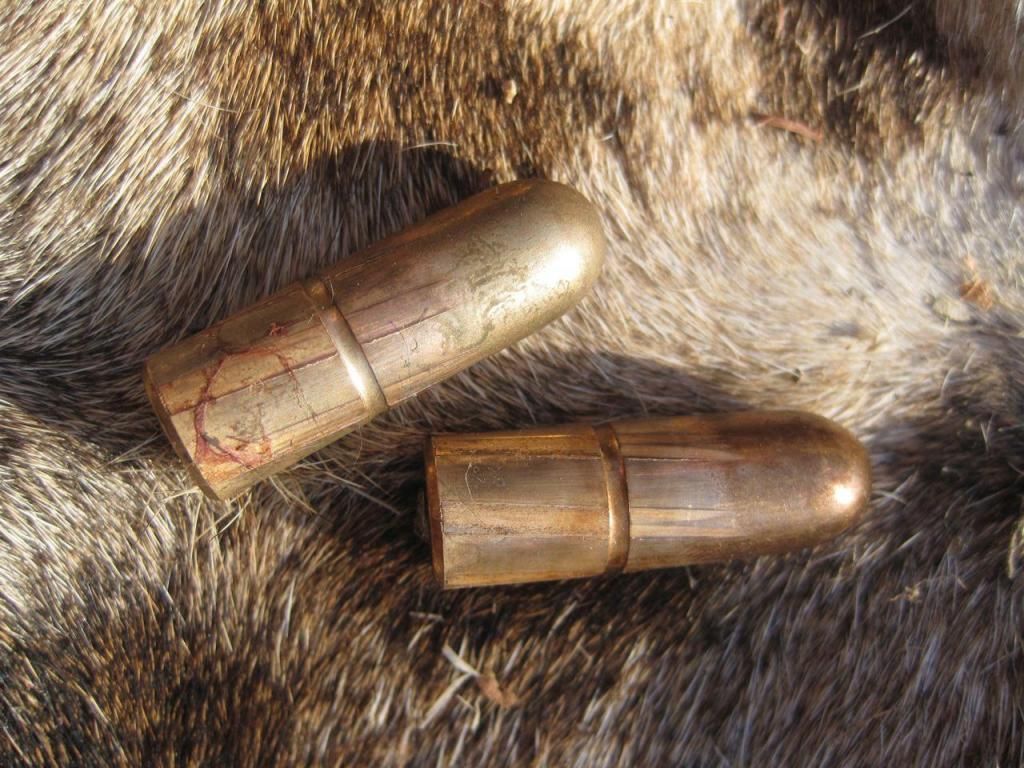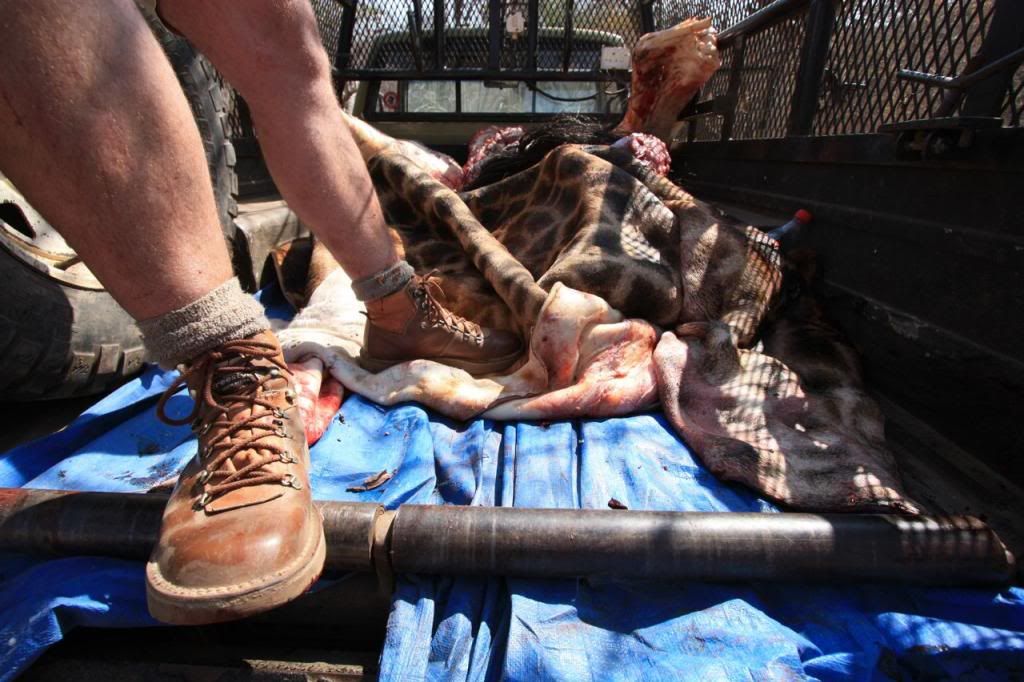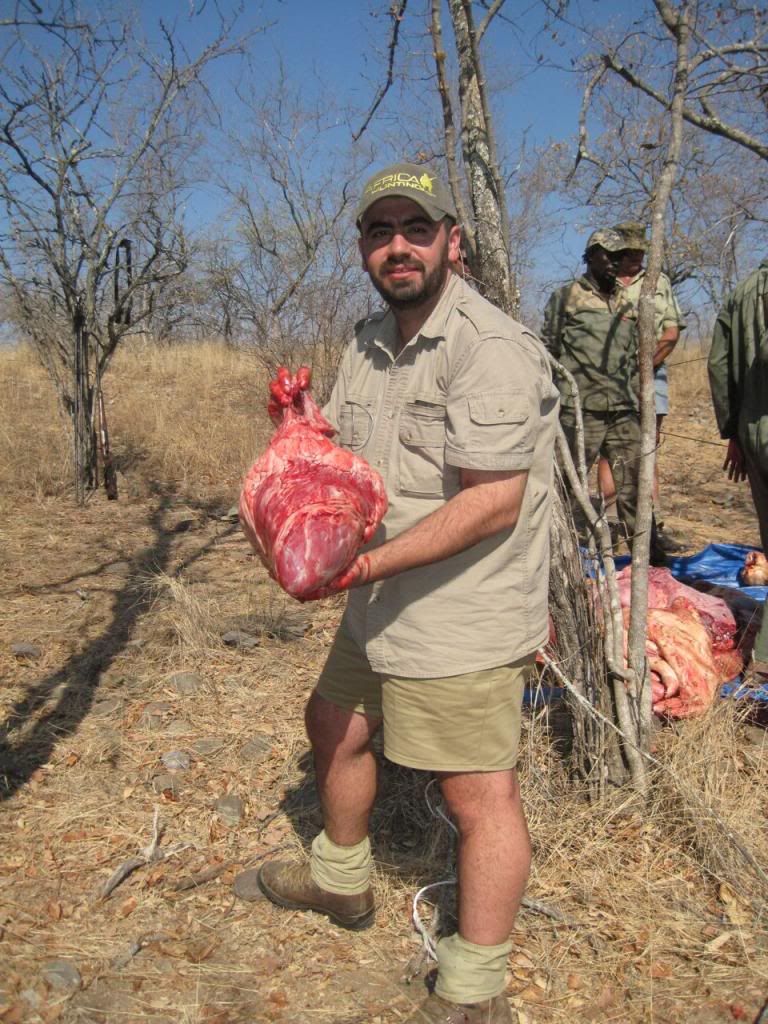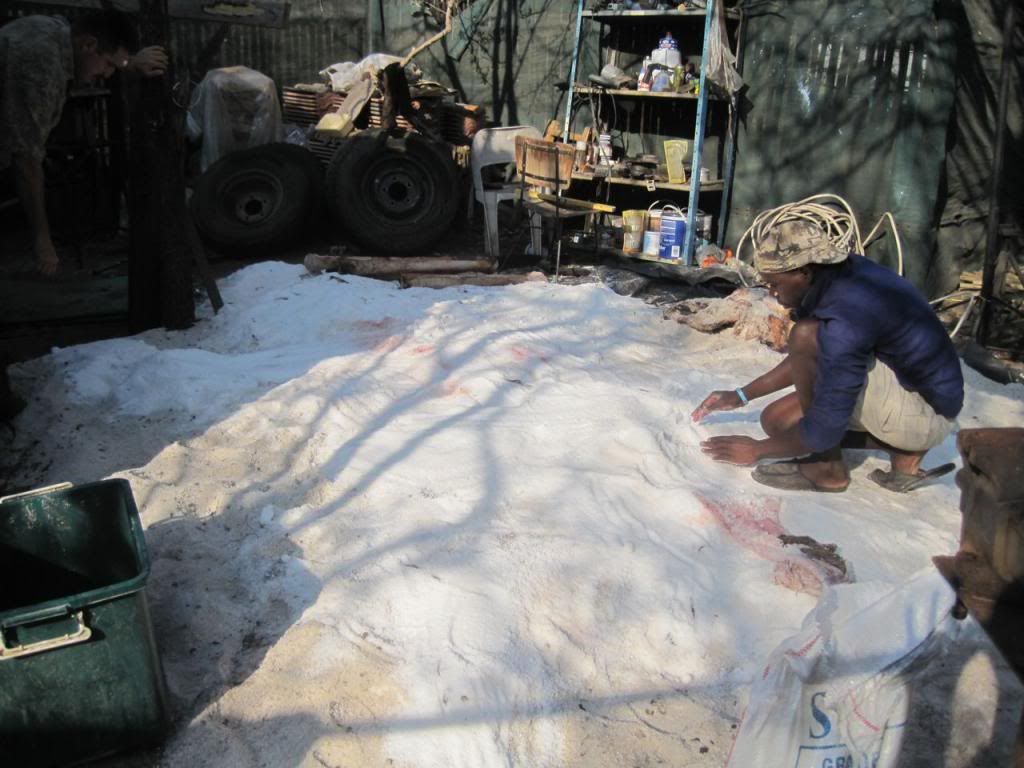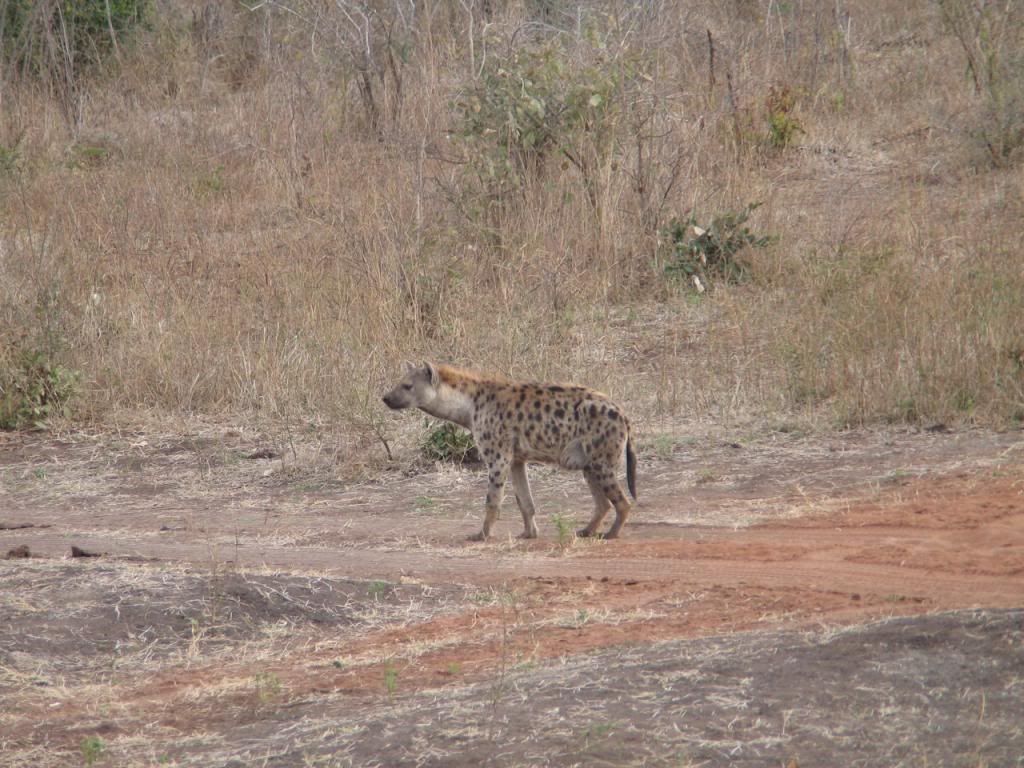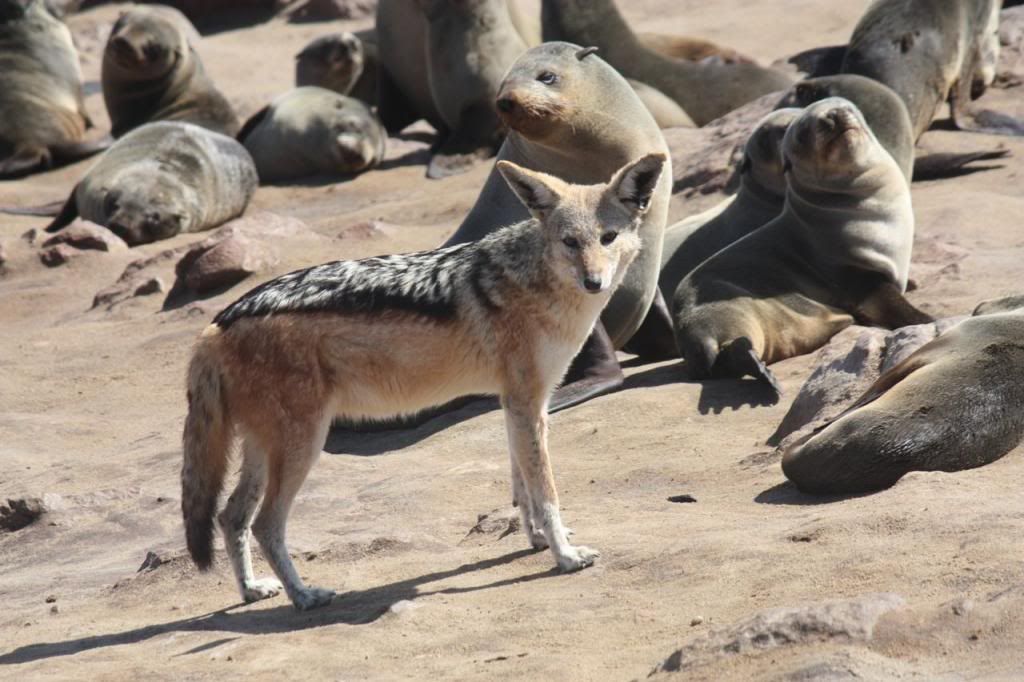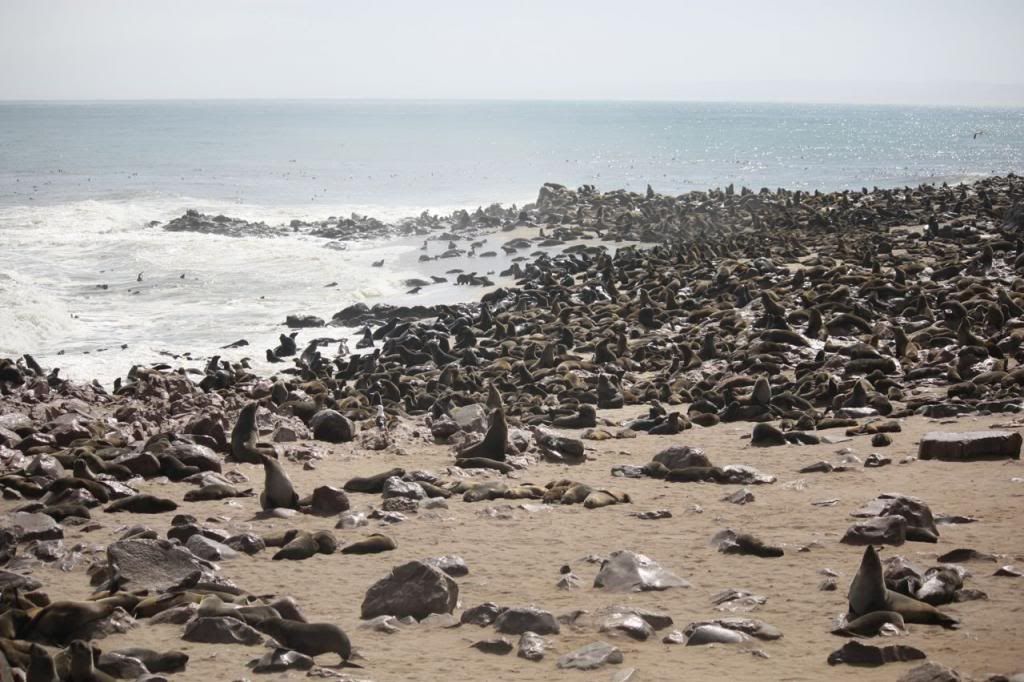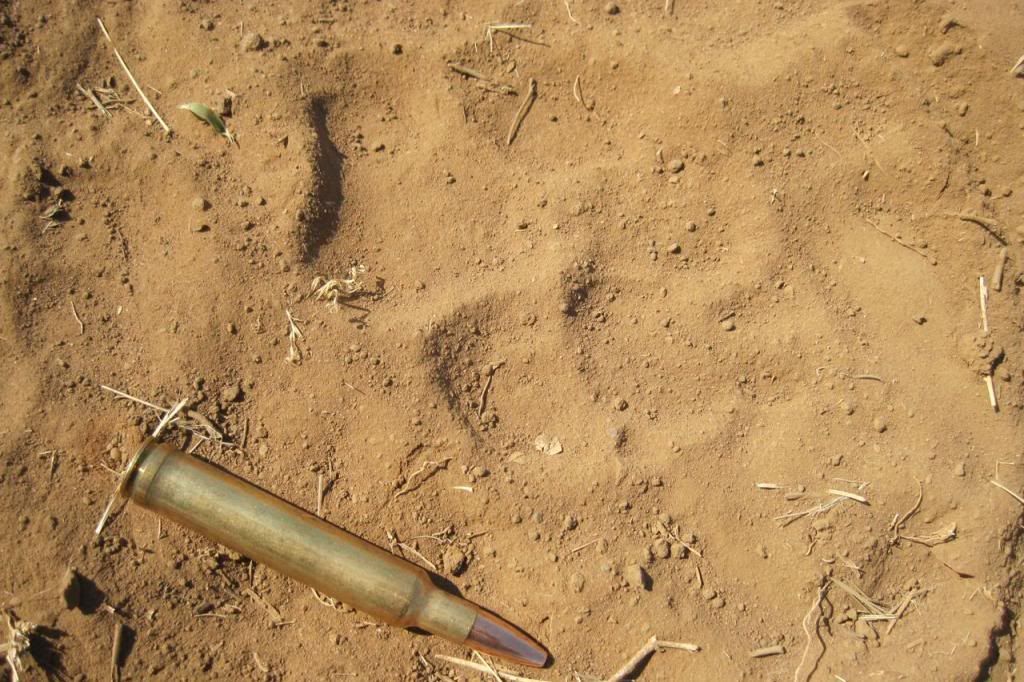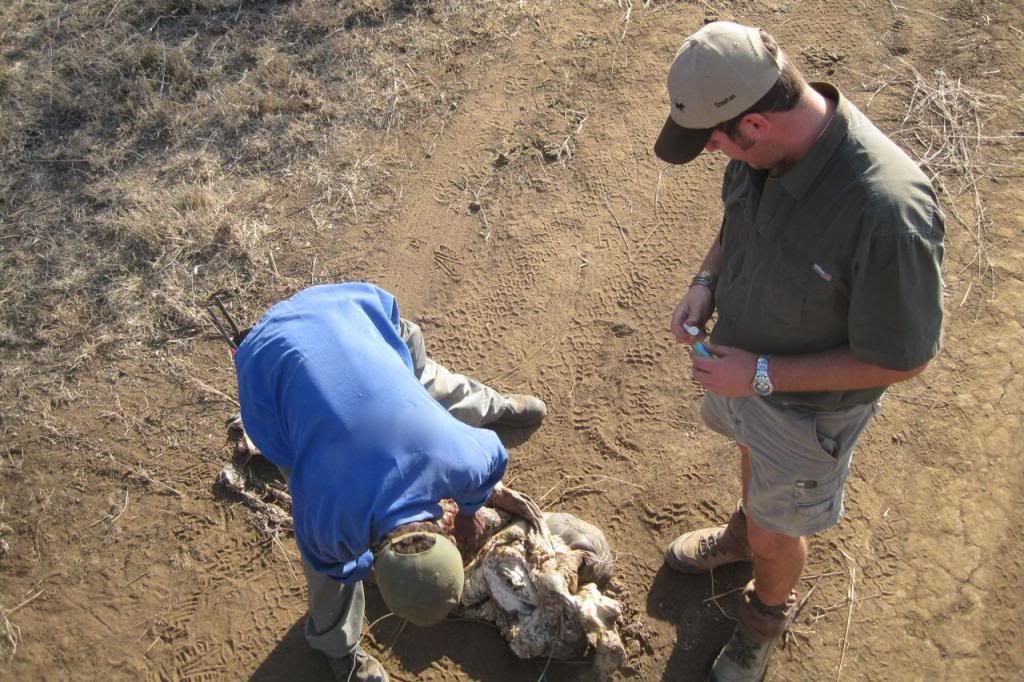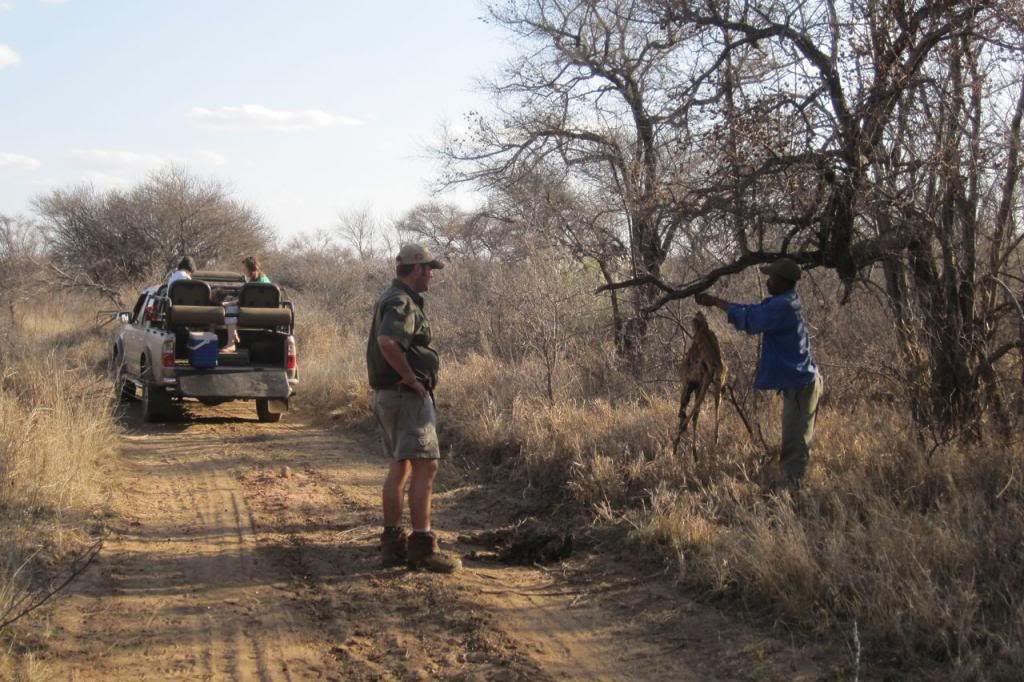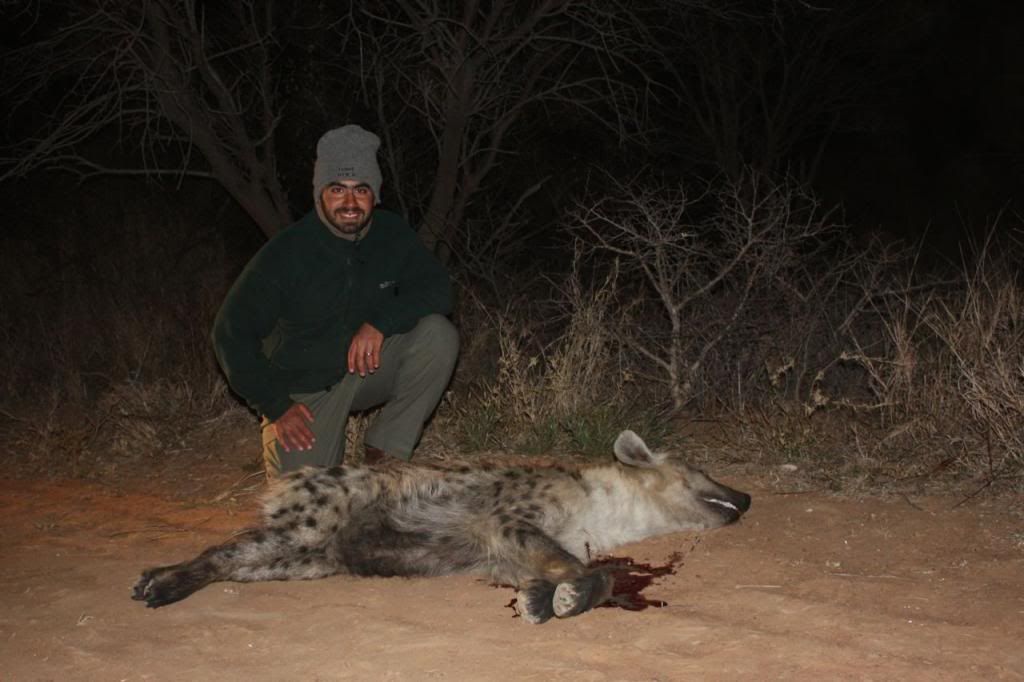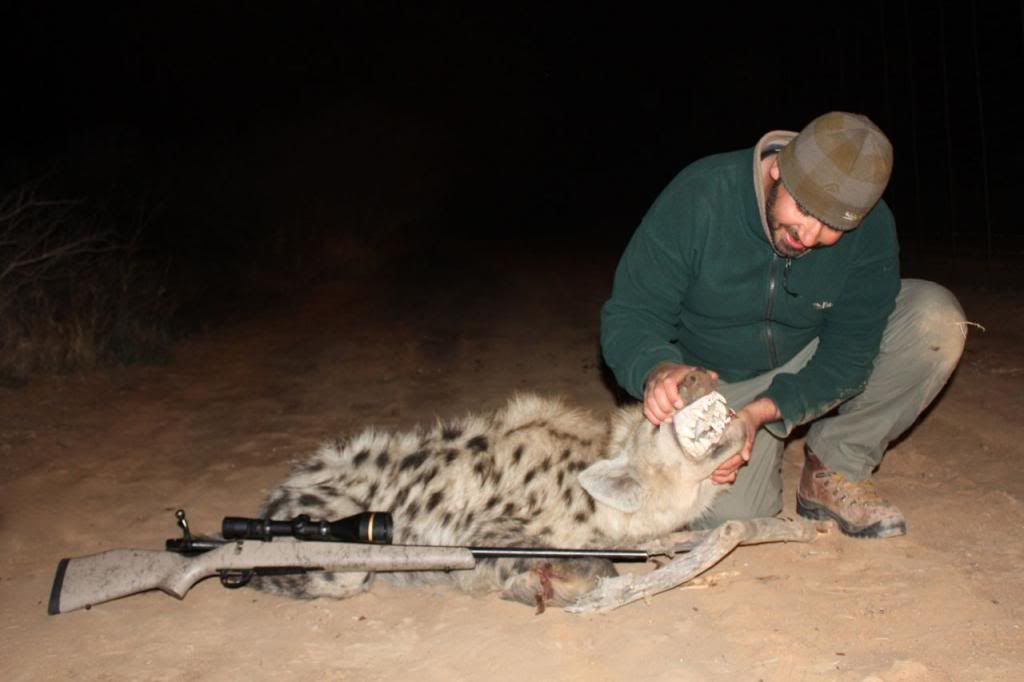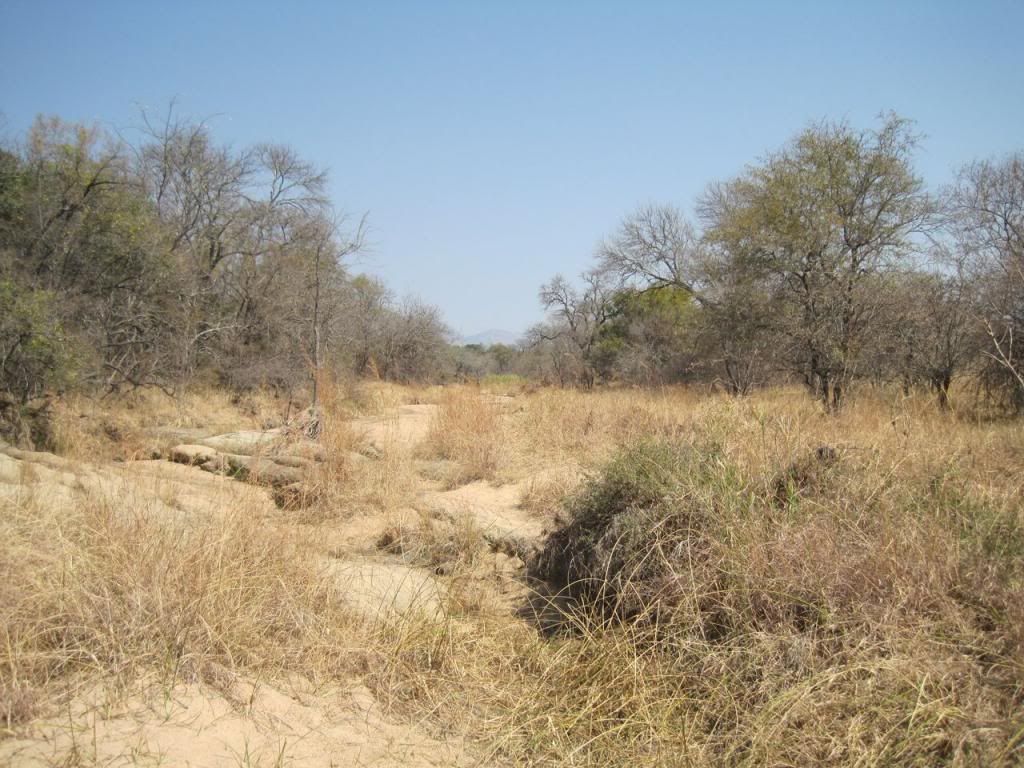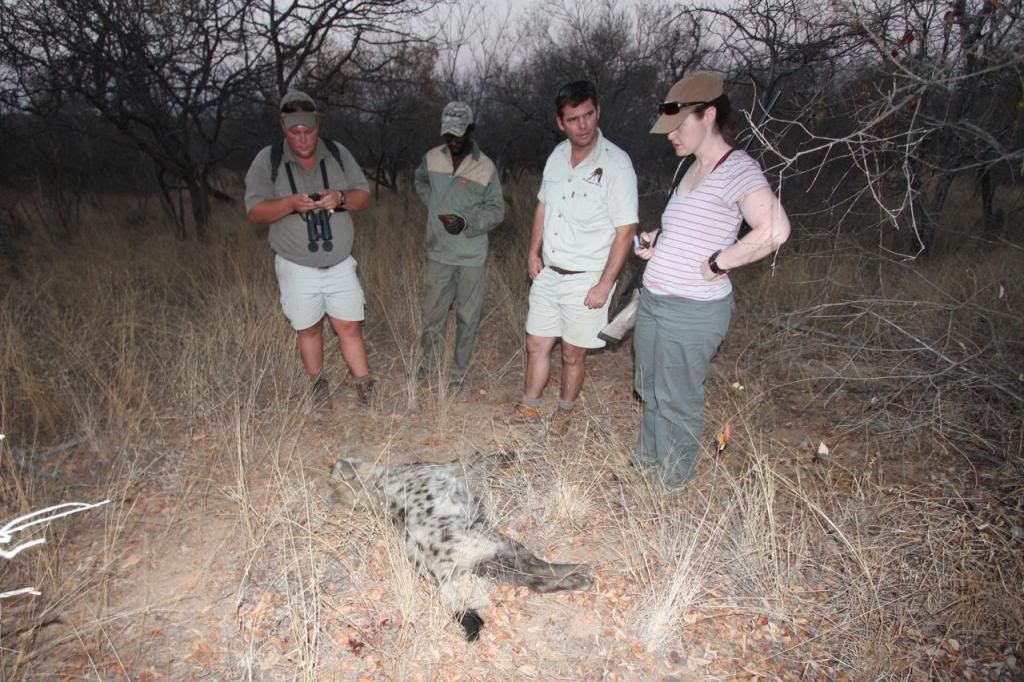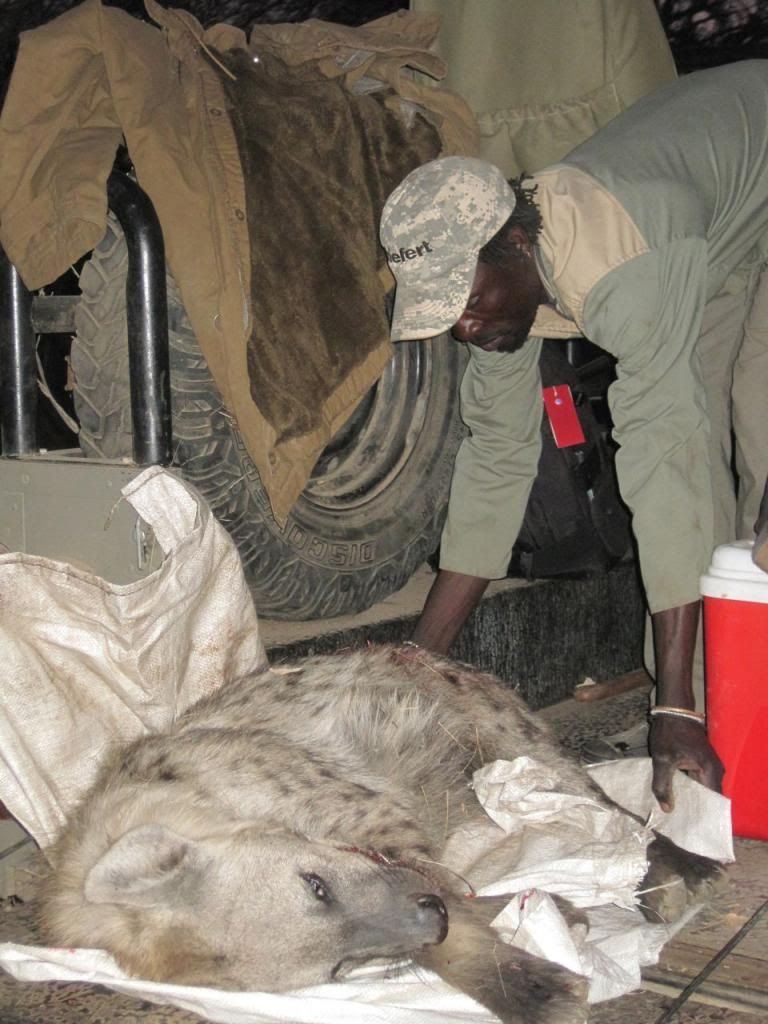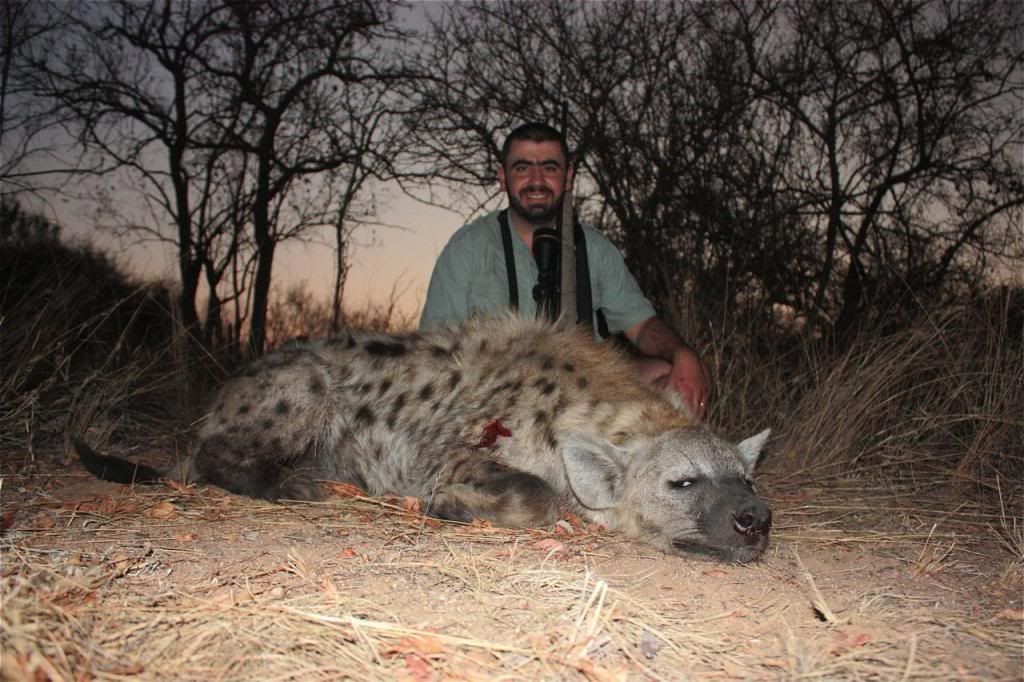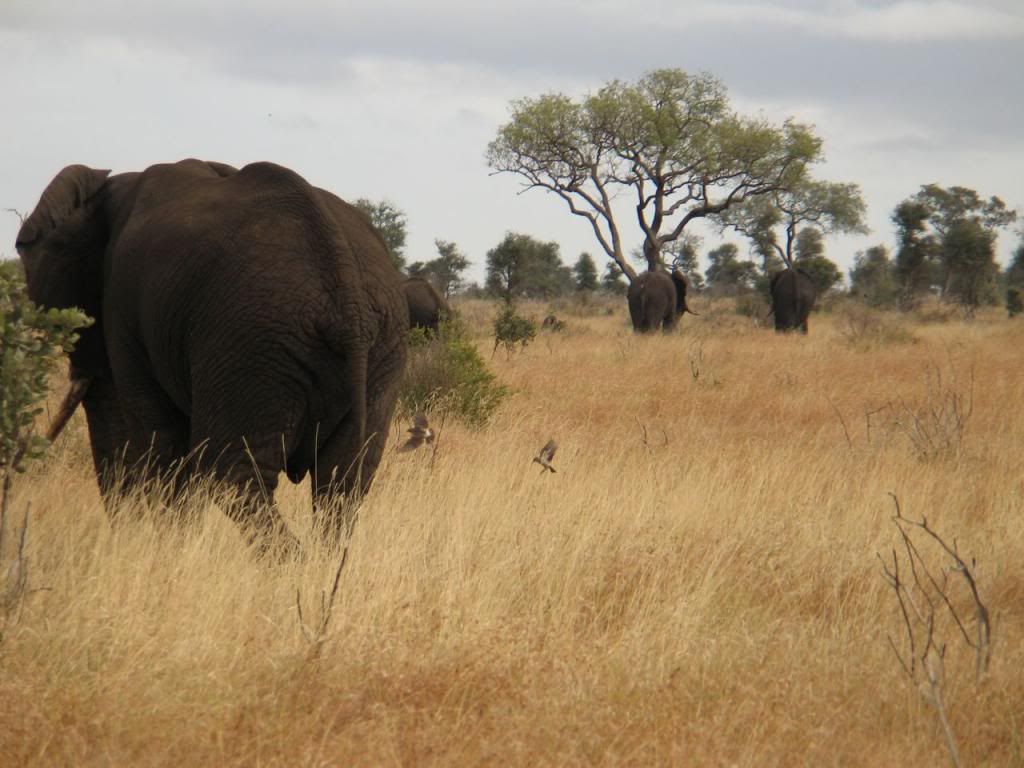I've heard this a lot in the last couple of weeks. One friend even rang me and in the saddest voice asked -
"…why would you do a thing like that?" My sister sent me a text saying,
"…every time I go to the zoo and I see the giraffes they make me feel happy and I can’t help smiling..." - guess she’ll be doing a lot of smiling if she visits once we get that shoulder mount in position in the new house.
In an interview with David Schwimmer about the new film Madagascar 3, the actor says
“…I think they’re big easy targets in the animal kingdom. They just seem so easy to take down. And what’s their defence? They have no defence mechanism…” It seems odd that so many people see giraffe as singing and dancing New Yorkers. Something about that seems, well... odd...
Did I hunt giraffe on safari? Yep, sure did. During our safari we hunted the Southern Giraffe - Giraffa camelopardalis giraffa – the same species that we encountered throughout Zimbabwe while looking for an old dagga boy and the species that most westerners will think of when referring to giraffe. This is the subspecies you will encounter in Kruger Park.
At 1,500kg and standing up to 5.2 tall, there’s not too many creatures that will tango with a giraffe. There are prides of lion that will hunt giraffe and our experience last month showed us the terrible fate that may await a giraffe in lion country. Nasty business.
In their younger years, bull giraffe fight for dominance by necking - using their muscled necks to swing their big, heavy heads like a mace, landing heavy blows on their opponent’s body. As the bulls get older, not only will they get darker in colour, but they also develop bony growths on their skulls and a pair of particularly large growths behind their horns that look very much like a second set of horns; he who swings the biggest hammer wins! Once his position is established, a bull can assert his dominance simply by standing tall when he encounters a lesser male.
So when hunting giraffe, what exactly are we looking for? A big old stink bull, black with age, with a thick set of horns and many bony growths on the skull. A few scars may bear testament to the encounters an old bull may have in the 25 or so years he roams the bush. And then there’s the hunt; getting the wind right, getting within range without being seen and placing a shot into one of these enormous beasts that will bring him down quickly.
Our hunt was centred around two properties – the first a privately owned game reserve that had been issued with quota by Nature Conservation as they had too much game, the second a property that doesn’t generally allow hunting, but has recently started to take off some game following mass deaths during the 2008 drought.
The initial plan was to use the .300 Weatherby Magnum for a shot to the base of the skull. Now I've seen a lot of giraffe over the years but I guess I never really appreciated how big these creatures were until I was out there hunting a bull last August. Theory quickly went out the window and I decided to lug the .450 when stalking giraffe, the rifle I was carrying for elephant.
We struggled with the wind and couldn't put something together to get ourselves in position for a shot with any of the bulls we encountered - and none of these bulls had really entered the dark colour phase yet.
Out in the Land Rover one morning we met Kobus at our usual remote access rendezvous ready for a day hunting the game reserve; we were heading straight for the river to spend the morning stalking. As we drove through the reserve I spotted a big bull giraffe in the bush off to our right and got the guys to pull up once we were well out of sight.
We stalked back in a tight straight line, moving slowly and quietly towards the old bull. Hidden in a patch of thorny acacia, we all raised our glass to check out the old boy. My PH Floris and Kobus the Game Warden both agreed that he was a good bull - "black" and big bodied, with thick horns and plenty of bony growths on his head. The boss thought he was a great animal and the hide on this bull was everything she was looking for.
Through the Zeiss 10 x 40's I borrowed from my mate Sam, I spotted a big scar on the bulls shoulder.
"Kobus, what's the scar on his shoulder?"
"Dagga that old bull was attacked by a pride of lions last summer. He was mauled very badly and had a huge piece of skin hanging off that shoulder. We didn't think he was going to make it as he had a terrible infection, we were going to shoot him. He has deep scratches down the other side from the lion's claws. We haven't seen him for months but it looks like he's come through the worst of it now. He's a good trophy Dagga, got a good story to go with it and he's very old, not much time left for him now. Taking this old boy will give the younger bulls an opportunity with the cows."
Floris nodded in agreement as Kobus spoke,
"…he's a great bull Dagga, we won't find better." I looked back at the boss and she was clearly in agreement.
"Let's go get him guys." We moved back down the slope, out of the bush and onto a game trail. The soft sand masked our approach and unlike our previous attempts, the wind held for this hunt. Without looking, I checked the power selector on the 1.5-5x was turned to it's lowest setting and I pushed one of the fat .450's into the chamber, bolt up. We rounded a small spur and came out into the open with the bull ahead of us, slightly up the slope in a small wash-away.
"The wind is good Dagga," whispered Floris,
"we just walk straight at him slowly, he should watch us, you remember the heart is a lot higher?"
I closed the bolt and raised the old Brno for a frontal shot just as the bull turned his back on us and moved farther up the hill; he stopped and turned back, quartering towards us. A few steps to my right had me in the clear and I raised the rifle and quickly squeezed of a shot at the bull.
The 500 grain Woodleigh hit the bull hard and he reared up on his back legs as the solid punched through the very top of the heart, perforating the atriums and the aorta. He galloped off to the left as I cycled the bolt and raised the rifle a second time. I swung the rifle along his midline and sent another bullet his way; the bullet cut through a 12" Marula Tree before breaking the giraffe's shoulder and sending him toppling to the ground as he covered his last 30 yards. It was done - by the time we walked up to the bull he had expired.
We were in awe and the scale of this magnificent creature; he was massive, bigger than I could have imagined. His head was as big as my torso and each hoof as big as both of my hands. With the small crew we had on hand repositioning the bull was totally out of the question so we took a few photos on the side of the hill where he fell amongst the rocks and naked trees.
Skinning the bull was a six hour marathon, a huge task! I couldn't believe how thick the skin was, Reckson was using a carpet knife to cut through the hide. Siegfried and I dug out the bullets while we worked on getting the cape off the bull. My first shot had penetrated the full width of the bull's chest and stopped under the skin on the of side, the second shot broke the shoulder and stopped inside the chest cavity - that shoulder is made of the heaviest bone I have ever seen.
The recovered Woodleigh slugs performed brilliantly. They did a great job on the giraffe and were in great condition given that they had just been launched at 2,380fps from fairly close range. I was amazed that neither shot had exited; the bull soaked the full force of both projectiles - the second no doubt much slower having passed through the Marula!
Floris, Seigfried, Eddie, Kobus, Reckson and I heaved each part of the bull as we broke down the carcass into limbs and split the reminder of the carcass. We used the winch on Eddie's Toyota to load up the meat, cape and back skin along with the skull. The winch saved a lot of bad backs that day!
I spent a bit of time with the boss looking over the major organs; the liver was as big as a bathmat, each kidney was a big handful, and the heart was a big two handed lift, both atrium perforate and the blood vessels ruptured by the 500 grain Woodleight. Reckson packed the heart, lungs, liver and tripe into a sac and threw it in the back of the bakkie.
Back at camp, Reckson cut panels from the flesh side of the skin to bring it down to a reasonable thickness that the salt would penetrate. Once the skin was "shaved down" we dropped the cape and back skin into a brine - strong with salt and disinfectant. The next day we pulled the hide out of the brine and rubbed in 500 kilos - half a metric tonne of salt into the old bull giraffe.
We had our bull. In the salt.
